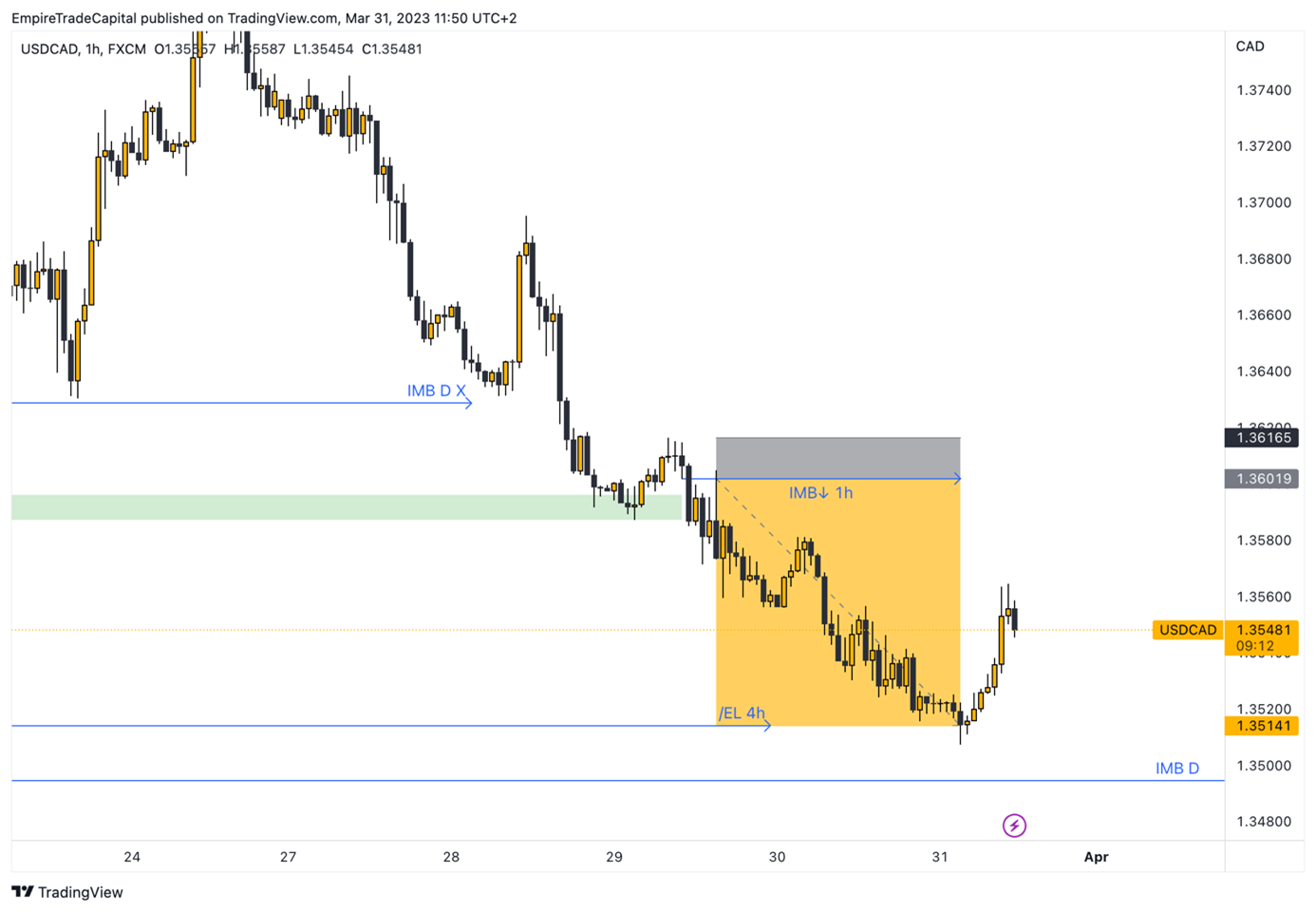USD/CAD is forming a bullish market structure on the daily time frame, which is an unfavourable aspect, if I am interested in opening a sell position. But when I looked at it in more detail, I found that the price filled the key daily Imbalance zone and created a corrective bullish reaction. That represents an open path for one more wave of downward correction due to the filling of another Imbalance zone from which an impulsive upward movement can potentially begin about the daily trend.
As I mentioned in the introduction, the price was at support in the one-hour time frame. Around 9:00 a.m. (UTC+2) there were multiple rejections of higher prices, which was reflected by candlestick formations, the so-called shooting star. The price expectedly fell below support (history repeats itself), and at that moment I was convinced that I wanted to sell this market. I set a pending order at the price of 1.36019, representing the one-hour Imbalance zone. I set the stop-loss order above the previous lower high of the structure and the place where the price refused to grow further. As I already mentioned, the price had space for a deeper correction on the daily time frame, so my take-profit was clear. Daily Imbalance zone at the level of 1.35141.
The trade ended with a profit of 6%.*

Chart 1 USD/CAD one-hour time frame
* Past performance is no guarantee of future results.








